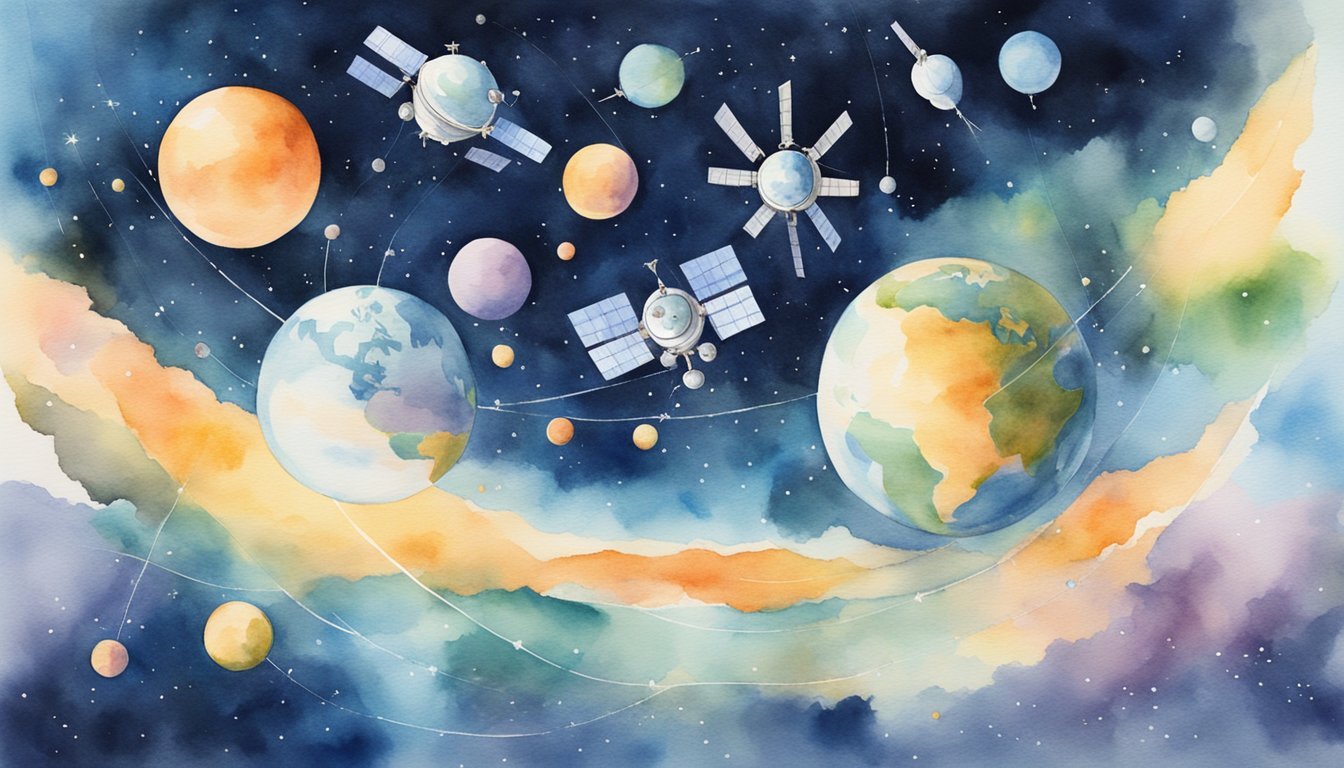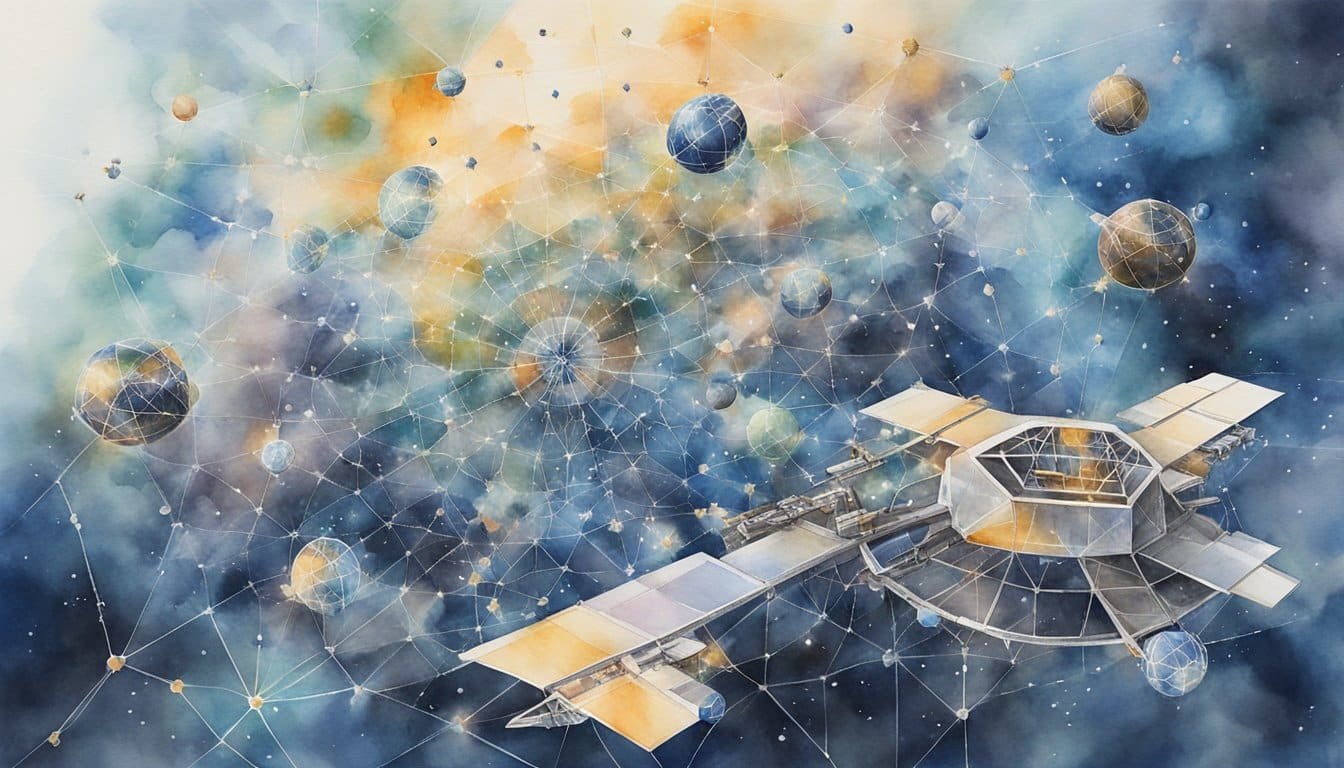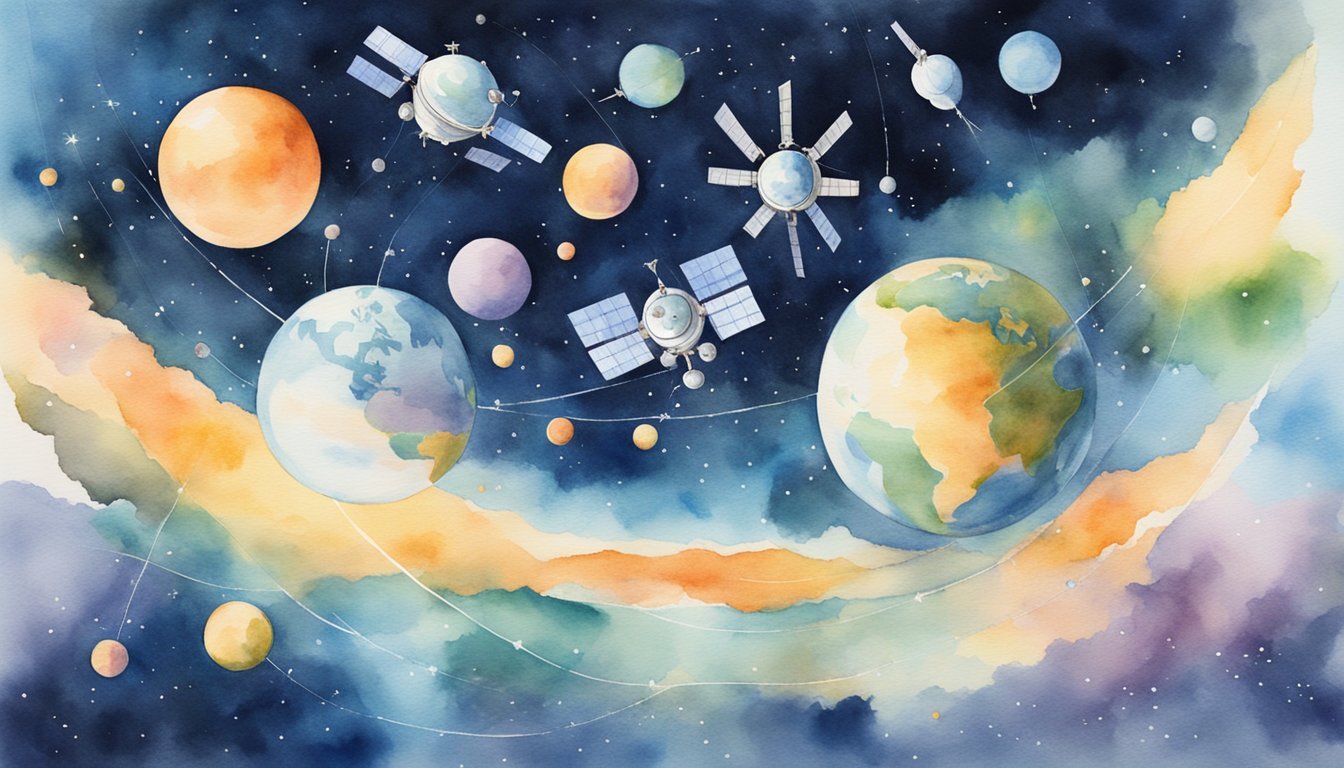Overview of Satellites in Orbit
The sky above us buzzes with activity far beyond the flight paths of airplanes. Satellites of various shapes and sizes dance around Earth, some whizzing by at lightning speeds in close orbit, others lingering in the distant geosynchronous tracks. These artificial spacecraft have become indispensable for communications, weather forecasting, science, and even astronomy.
On the lower end of the scale, one finds the International Space Station (ISS), orbiting roughly 400 kilometers above our heads. It’s comparatively close, within what’s known as Low Earth Orbit (LEO), where the bulk of satellites reside. This region experiences higher traffic due to its convenience for Earth observation and communication.
Above LEO lies Medium Earth Orbit (MEO), important for navigation satellites like those of the GPS constellation. This zone requires a delicate balance of altitude and orbit speed, designed so that satellites spend a predictable amount of time in view of ground stations.
Climbing higher, one enters the serene realm of Geostationary Orbit (GEO), nearly 36,000 kilometers up. This lofty perch is ideal for satellites tasked with relaying signals across vast communications networks. Here, satellites match Earth’s rotation, appearing stationary to those on the ground.
Satellites come in many forms; some are as small as a loaf of bread while others rival the size of a bus. They all share the cold vacuum of space as their home, surviving extreme temperatures and the perpetual onslaught of micrometeoroids within Earth’s protective atmosphere fringe.
From physics experiments to enabling smartphone maps, these man-made marvels play a critical role in the modern world. With each new launch, the tapestry of artificial stars grows richer, enabling advancements in various fields of science and technology. Just imagine a world without these silent guardians overlooking our planet!
Explore more about these fascinating celestial objects and their roles in satellite communication and remote sensing activities.
Launches and Satellite Types

The skies above Earth are bustling with a growing number of satellites, launched by rockets from various countries and companies for an array of purposes. Delving into the history and the recent advancements in satellite launches helps us understand the diversity of satellites’ functions and their impact on daily life.
Historical and Recent Launches
From the launch of the Soviet Union’s Sputnik in 1957, humanity has made extraordinary progress in space technology. The USA and Russia lead historical launches with iconic rockets like the Soyuz, but nowadays, private companies like SpaceX with their workhorse Falcon 9 are pushing the envelope, launching not only scientific satellites but also megaconstellations like Starlink that promise global internet coverage. The recent rise in satellite launches by nations and private players such as Amazon’s Project Kuiper and OneWeb is making the sky an increasingly crowded place.
Diverse Satellite Functions
Modern satellites come in various shapes and sizes and serve collective interests from scientific research to everyday communications. Many scientific satellites orbit Earth, capturing invaluable data that furthers our understanding of the universe and enhances life on the planet. Weather satellites help in accurate forecasting, while communications satellites facilitate global broadcasting and data relays. Developments in spacecraft design allow countries and companies to deploy satellites tailored for surveillance, environmental monitoring, or global positioning systems. But this proliferation in space has its downside: space debris has become a significant concern, with defunct objects contributing to a potentially dangerous environment in Earth’s orbit.
Impact and Management of Satellite Infrastructure
As the number of satellites in orbit escalates, it becomes crucial to examine the effect these have on space infrastructure and how they are managed to ensure safety and functionality.

Increasing Satellite Population Concerns
The growing number of satellites, including smallsats and mega-constellations, raises concerns about space debris and the potential for collisions. As companies aim to meet the demands of the electronics revolution and offer internet connectivity to underserved areas, low-Earth orbit becomes increasingly crowded. This escalating satellite population could lead to interference with existing satellites and complicate the orbits of key structures like the International Space Station.
Policies and Space Traffic Control
Efficient space traffic management is vital as the skies become more congested. Policies are being developed to deal with the new challenges presented by the democratization of space. Universities such as University of Massachusetts Lowell contribute to this field, with experts like Professor Supriya Chakrabarti exploring advanced image-processing software to track debris. These efforts, coupled with proposals from private companies like SpaceX and OneWeb, reflect the aim to create a sustainable environment in space that supports the advancement of human endeavors, space exploration, and addresses concerns like climate change.

